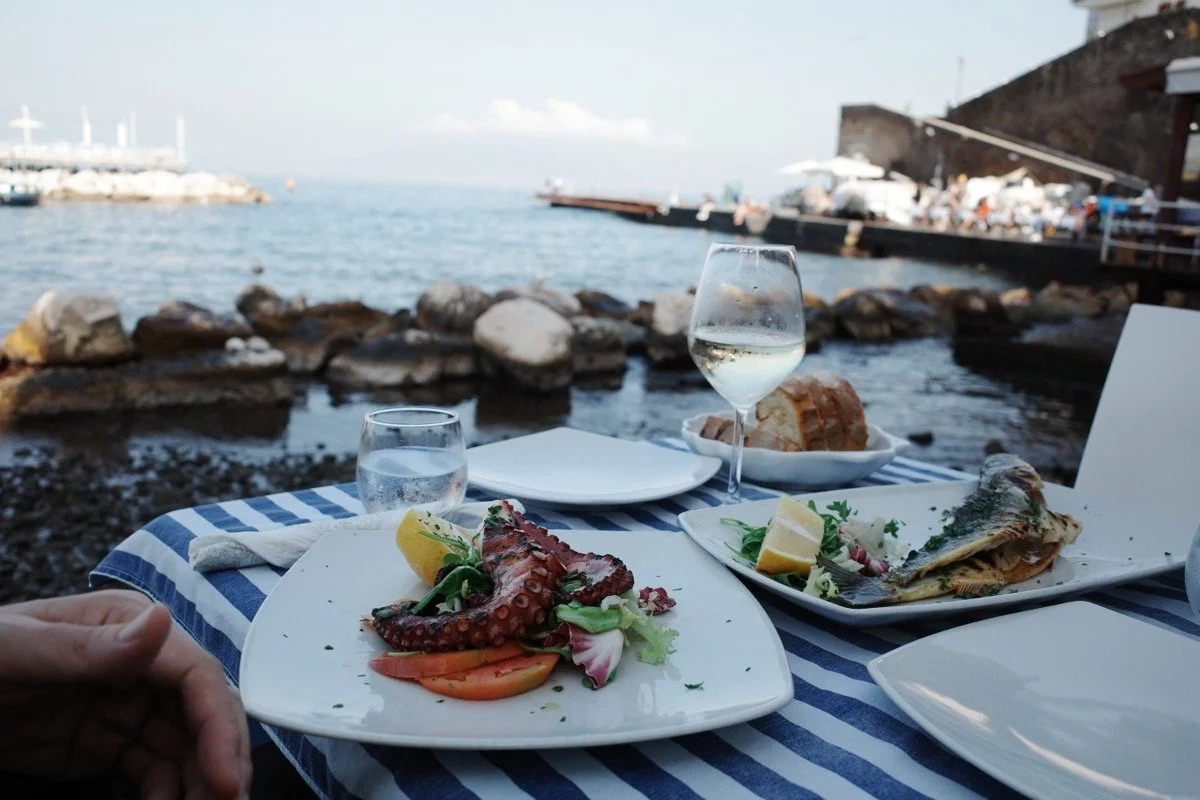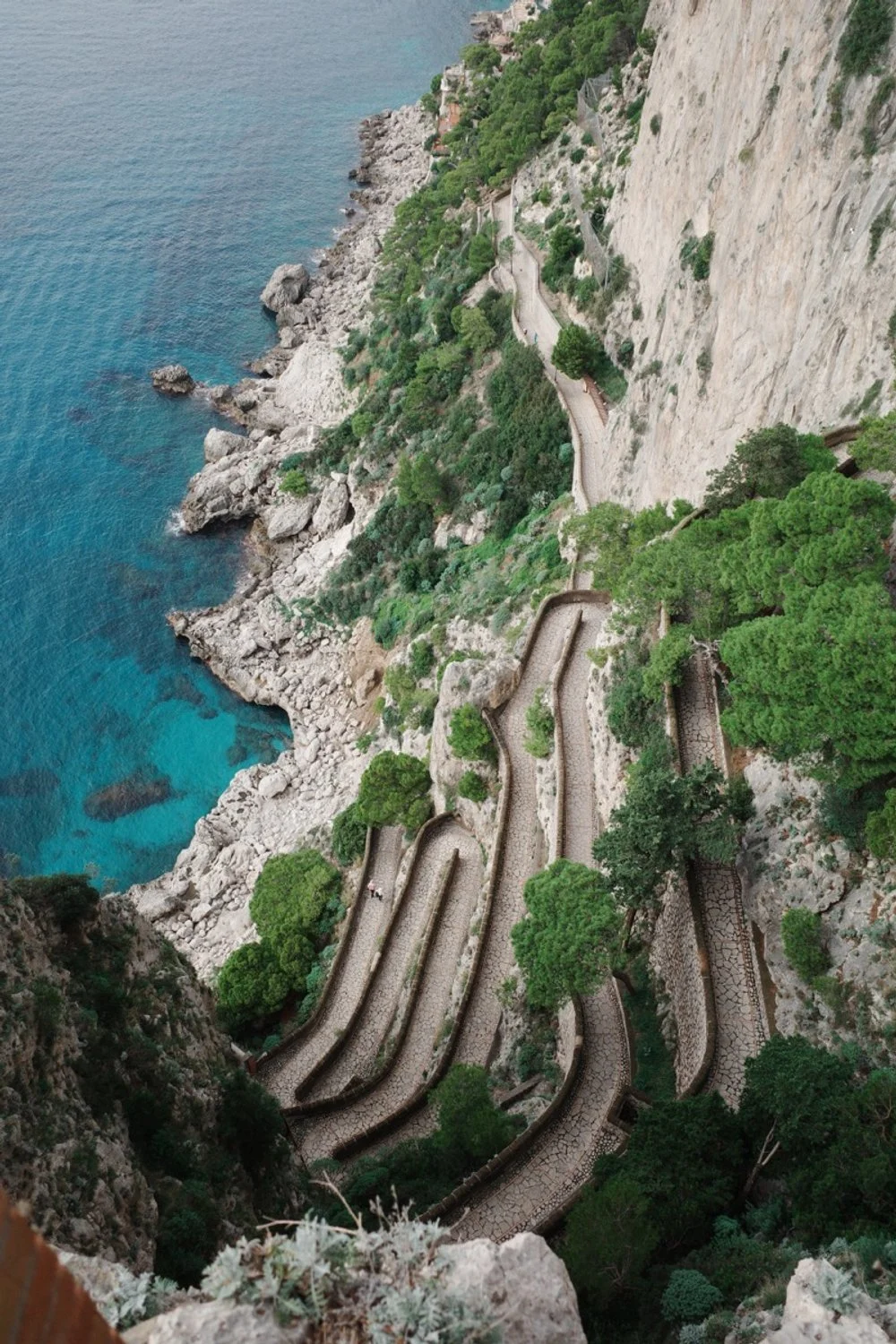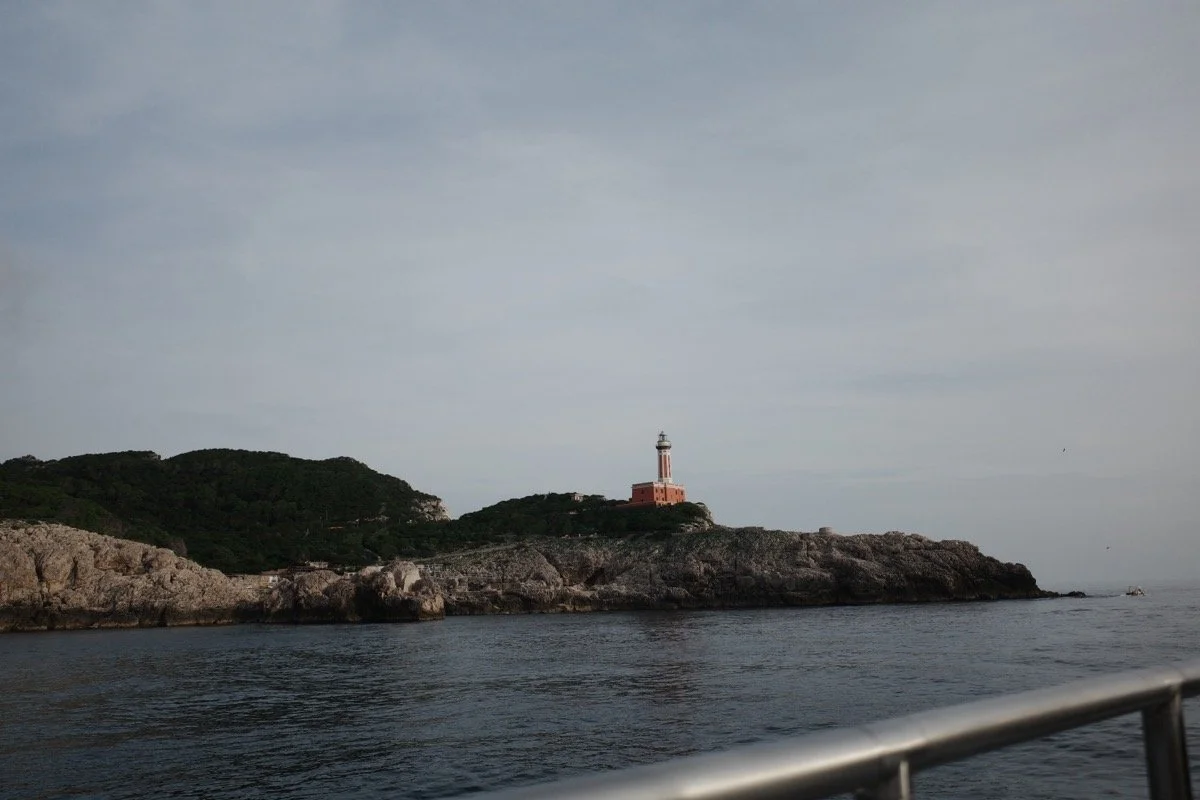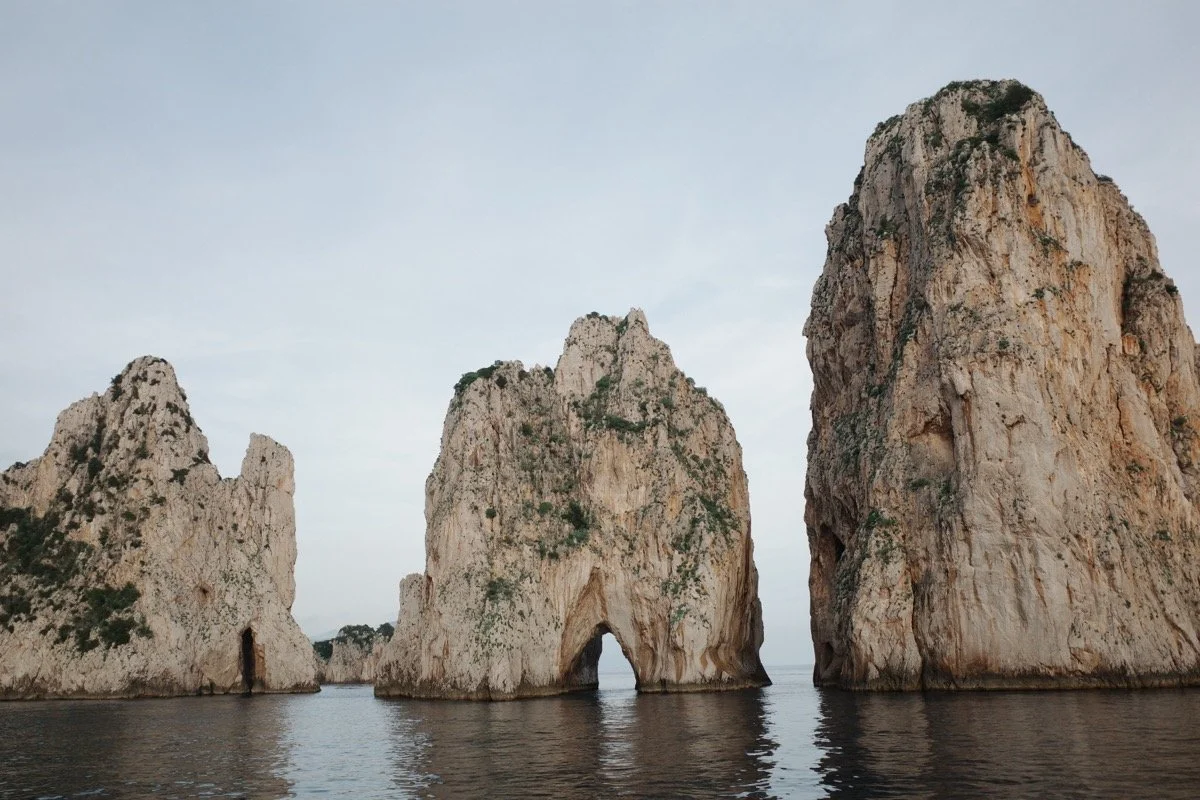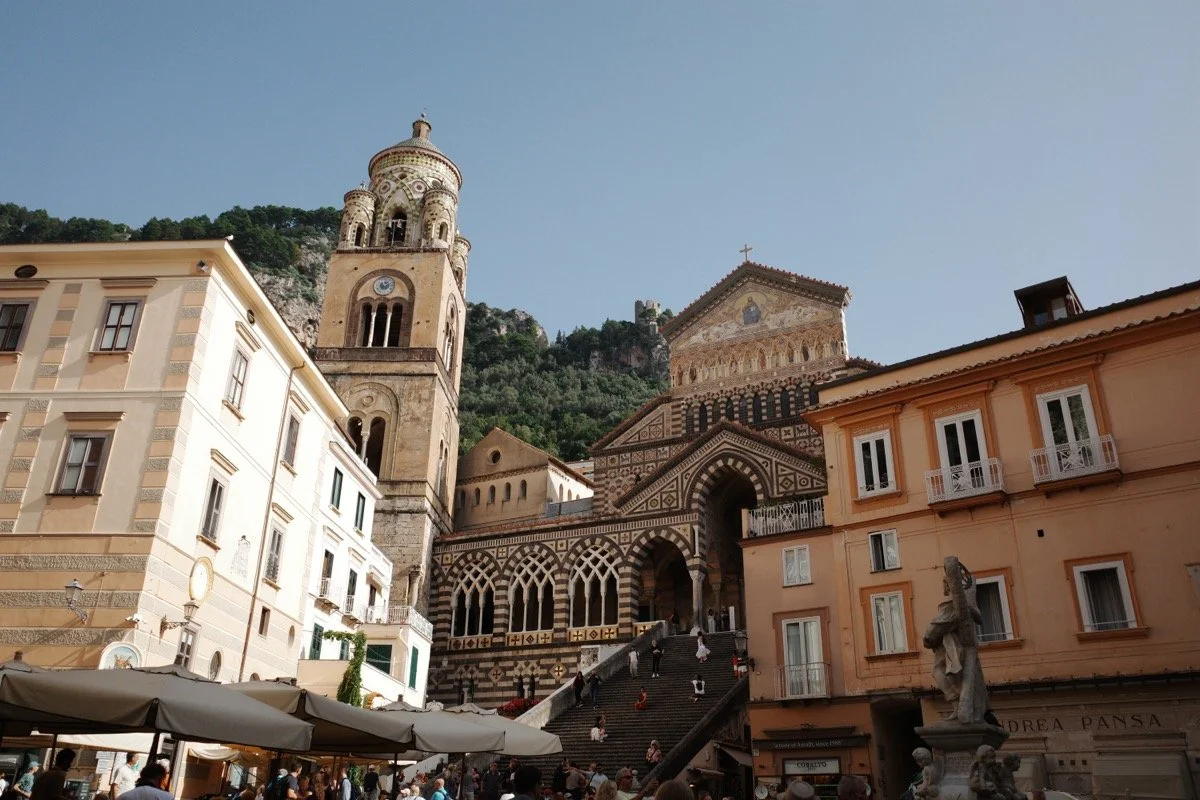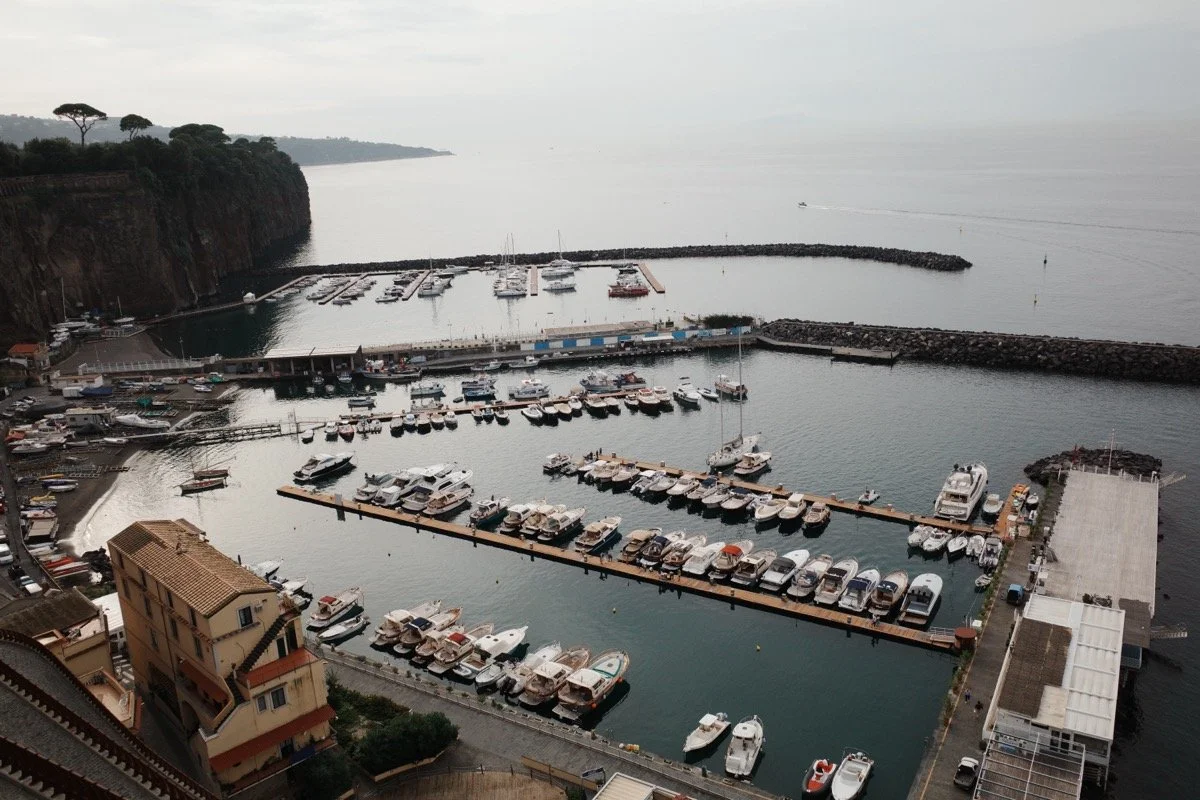What to Do in Sorrento: Our Favourite Eats, Sights, and Day Trips
Sorrento is a picturesque coastal town perched above the Bay of Naples — and it makes the perfect base for exploring southern Italy. From here, you can easily take day trips to Capri, Pompeii, Positano, Amalfi, and Ravello, while still enjoying the slower pace and charm of a walkable town. In this guide, I’m sharing the highlights of our stay, what we learned (including what we would have done differently), and practical tips for getting around.
How to Use This Guide
Walking Tours – A great local-led walking tour that helped us appreciate the quieter beauty of Sorrento
Food & Dining – A must-visit seafood spot with incredible views
Day Trips – Our tips and highlights from visiting Capri, Positano, Amalfi, Ravello, and Pompeii
Where We Stayed – Why we chose an Airbnb in Piano di Sorrento, and what we’d do differently next time
Travel Logistics – How to get to Sorrento, how to get around, and tips on transport between towns
FAQs – Common travel questions answered, including how many days you need and whether Sorrento is part of the Amalfi Coast
Walking Tour: A Great Way to Start Your Sorrento Trip
I always enjoy joining a walking tour to learn more about the town from locals, and we really enjoyed this one we found on Viator — Secrets Walks of Sorrento with Locals. It’s the perfect way to get your bearings, hear stories you’d never find in a guidebook, and peek into corners of the town you might otherwise walk past.
Here are some interesting locations that we visited during the walking tour:
Cathedral of Sorrento (Cattedrale dei Santi Filippo e Giacomo)
This lovely cathedral along Corso Italia is easy to miss if you’re just focused on the shops. Step inside and you’ll find a peaceful space filled with beautiful frescoes, wooden choir stalls, and a striking 15th-century bell tower built from lava stone.
Did you know? The interior includes a hidden collection of local marquetry — Sorrento is famous for its inlaid wood craftsmanship, and some of the best examples are found here.
Cloister of San Francesco
A short walk from the main square, this 14th-century cloister is a quiet, leafy oasis with elegant arches and vines crawling up the stone columns. It’s often used for small classical concerts and intimate weddings.
Local tip: Go in the late afternoon when the light filters through the columns — it’s one of the most peaceful spots in town, and a lovely place to take a breather from the crowds.
Valley of the Mills (Vallone dei Mulini)
Tucked just behind Piazza Tasso, this hidden ravine dates back to the 13th century and once housed flour mills powered by natural springs. After urban planning changes in the 20th century, the valley became isolated and was gradually reclaimed by nature — you’ll now see moss-covered ruins and lush greenery creeping over the walls. It’s hauntingly beautiful and feels almost surreal in the middle of a bustling town.
Fun fact: The unique microclimate in the valley (humid and shaded) has created the perfect conditions for rare plants to thrive — some species here don’t grow anywhere else in the region.
Where to Eat: Porto Marina Seafood
📍 Address: Via Marina Grande, 64, 80067 Sorrento NA, Italy
We loved this place so much we went twice — once for lunch and again for dinner! Porto Marina Seafood sits right on the water at Marina Grande, a picturesque fishing village that feels a world away from the town centre.
The seafood was incredibly fresh, and the setting was unbeatable. We had front-row seats right on the edge of the sea (I was so worried that Alex would drop into the water) but it was so worth it!
It's about a 20–30 minute walk from the train station, but the route is scenic — you’ll pass charming alleys, viewpoints over the sea, and colourful houses lining the hillside. It’s honestly part of the experience.
First dinner in Sorrento at Porto Marina Seafood
We loved it so much that we went back for lunch!
This was how close we were to the water!
Day Trips from Sorrento
Sorrento makes a fantastic base for exploring the surrounding region — from island escapes to ancient ruins and iconic coastal towns. We booked two small-group day tours that made the most of our time without the hassle of arranging transport or logistics ourselves. These day trips covered Capri, Positano, Amalfi, Ravello, and Pompeii, with a mix of sightseeing, photo stops, and even a little shopping. Whether you're into history, scenic views, or just soaking up the vibe of the Amalfi Coast, these trips are easy add-ons to your Sorrento itinerary.
Day Trip from Sorrento to Capri
This shared tour to Capri on Viator was one of our favourites. Everything was well organised — we were picked up directly from our accommodation and dropped back after, which made it completely hassle-free.
For an extra €25 per person, we opted for the minibus upgrade to get around the island — highly recommend it! Capri is more spread out than you'd think, and having transport saved us a lot of time (and uphill walking), so we could explore more.
Highlights from Our Day in Capri
Giardini di Augusto
These beautifully manicured cliffside gardens offer one of the most iconic panoramic views in Capri, overlooking the winding Via Krupp path carved into the cliffside.
Fun fact: Via Krupp was commissioned in the early 1900s by a wealthy German industrialist and was once a secret path to his hidden pleasure grottoes.
Lunch at Scuola Scuie
A lovely stop for lunch with a laid-back vibe and solid Italian classics. Great if you want a local meal without the overhyped tourist trap prices.
La Capri Chic – Custom Leather Sandals in Anacapri
One of our favourite moments — we made a pair of custom leather sandals at this small boutique in Anacapri. The team was super friendly and helpful, and the sandal styles were timeless. A lovely keepsake you’ll actually wear.
Did you know? Capri’s handmade sandals are famous worldwide — Jackie Kennedy helped make them iconic in the 1960s!
Chairlift to Monte Solaro
We skipped the chairlift due to gloomy skies, but it’s worth noting: on a clear day, the Monte Solaro chairlift gives you the highest viewpoint on the island — panoramic views of the Bay of Naples, Sorrento Peninsula, and even Mount Vesuvius.
Around the Island by Boat
The tour wraps up with a scenic boat ride circling Capri’s coast — one of the best ways to appreciate its cliffs, grottos, and hidden villas.
Some fun facts we learned during the ride:
Blue Grotto (Grotta Azzurra) is only open around 120 days a year, depending on tides and weather. It was closed during our visit due to high tide, but entry normally costs €41 per person for just 10–15 minutes inside — so it may have been a blessing in disguise!
Faro di Punta Carena is Capri’s active lighthouse and one of the best sunset spots on the island.
Casa Malaparte is one of the most iconic private homes in Italy — only reachable by foot or boat, and known for its minimalist architecture clinging to the edge of a cliff.
Faraglioni are three towering rock formations peeking up from the sea.
Mammina Mia Road (yes, that’s really what locals call it) is the hairpin road leading from Marina Grande up the cliffs. Great views, but not for the faint-hearted!
There are only around 1,500 full-time residents living on Capri — and no new buildings have been permitted since 1981, which explains the limited housing and sky-high property prices.
Faro di Punta Carena is Capri’s active lighthouse and one of the best sunset spots on the island.
Faraglioni are three towering rock formations peeking up from the sea
Day Trip from Sorrento to Positano, Amalfi Coast & Ravello
We booked a semi-private day trip to see the Amalfi Coast’s most famous towns: Positano, Amalfi, and Ravello. Truthfully, we found this day less exciting — probably because we visited Capri first, which felt more unique and immersive. That said, if you have a spare day and want to check these off your list, this is a convenient way to do it.
Positano
This postcard-perfect town is famous for its steep cliffs, pastel-coloured houses, and winding lanes filled with boutiques.
Interesting fact: Positano was once a poor fishing village until artists and writers “rediscovered” it in the 1950s — John Steinbeck famously wrote that “Positano bites deep,” helping to spark international interest.
What to expect: It’s incredibly scenic from afar (especially from viewpoints along the coastal road), but on the ground, the narrow streets were very crowded and most shops cater to tourists. If you’re short on time, a photo stop may be enough.
Amalfi
Once a powerful maritime republic, Amalfi is now a small town best known for its cathedral and lemon-based souvenirs.
Fun fact: Amalfi was one of four major Italian maritime powers during the Middle Ages, alongside Venice, Pisa, and Genoa. You can still visit the Arsenale, a medieval shipyard, and learn about its seafaring past.
Our tip: If you’re visiting Amalfi, the Duomo di Sant’Andrea is worth a quick visit — the staircase and striped façade are iconic. Otherwise, the town centre is compact and can be covered quickly.
Ravello
Perched high above Amalfi, Ravello is known for its peaceful atmosphere and historic villas with stunning views.
Interesting detail: Ravello has long been a retreat for creatives — Richard Wagner composed parts of Parsifal here, and the town hosts a classical music festival every summer.
Our take: Ravello felt the most relaxed of the three, but if you’ve already spent time in quieter towns like Anacapri, you may find it less impactful. The views are lovely, though!
Day trip from Sorrento to Pompeii
If you’re interested in history, Pompeii is an easy and rewarding day trip. We visited it from Naples since it was one of our stops, but you can also get there easily from Sorrento — the Circumvesuviana train line connects all three.
Why It’s Worth Visiting
Walking through the ancient ruins of Pompeii is like stepping back in time. It’s one of the world’s best-preserved Roman cities, buried under ash after the eruption of Mount Vesuvius in AD 79. The streets, homes, baths, and even graffiti are still visible.
Getting There
From Sorrento: Take the Circumvesuviana train towards Naples and stop at Pompeii Scavi – Villa dei Misteri (approx. 35–40 mins).
From Naples: Same train line, just in the opposite direction (30–35 mins).
Alternatively, book a guided half-day tour from Sorrento that includes round-trip transfers.
My Tips
Join a guided tour – It made a huge difference for us. There’s a lot to see, and a good guide helps bring the place to life with interesting stories and facts you might otherwise miss.
Go early – It gets hot and crowded by midday. The site is huge, so wear comfy shoes and bring water.
Travel light – There’s a security check at the entrance, and large bags aren’t allowed inside.
Where We Stayed: Piano di Sorrento (and Why We’d Stay Elsewhere Next Time)
For our trip, we stayed in an Airbnb in Piano di Sorrento, a neighbouring town just outside Sorrento. While the views from our place were absolutely stunning — overlooking the sea and hills — getting to and from central Sorrento turned out to be more stressful than expected.
The walk into town took around 45 minutes, often along roads without pavements and barely any views. At times, we felt like we were walking on the edge of traffic. On our way back one night, we were caught in a train delay of over an hour, which made us rethink the trade-off.
If we were to do it again, we’d definitely stay in Sorrento itself. Being closer to the train station, marina, and main squares would have saved us time, energy, and a few moments of mild panic. Piano di Sorrento might work better for travellers with a rental car — but for us, Sorrento town is the better choice.
Travel logistics: Planning Your Trip to Sorrento
How to Get from Rome to Sorrento
The most common way to get from Rome to Sorrento is via a combination of high-speed and local trains:
Take a high-speed train (Frecciarossa or Italo) from Rome Termini to Napoli Centrale – the journey takes about 1 to 1.5 hours depending on the service you pick.
From Napoli Centrale, head downstairs to the Napoli Garibaldi station and take the Circumvesuviana train to Sorrento. This is a local commuter train that takes around 1 hour 10 minutes, with scenic coastal views.
How to Get from Naples to Sorrento
The easiest way is to take the Circumvesuviana train from Napoli Garibaldi station. It’s a local train that takes about 1 hour 10 minutes, with scenic views along the coast. Trains can be crowded and some may not be air-conditioned, so avoid peak hours if possible.
If you prefer comfort, you can:
Book a private transfer or shared shuttle
Take the Campania Express (a tourist-friendly version with fewer stops and more comfort)
Or enjoy a ferry ride from Naples port (Beverello) to Sorrento (approx. 45 minutes)
How to get from Sorrento to Positano?
You have a few options:
Ferry (April–October): Fast and scenic. Takes about 40 minutes
SITA bus: Cheap but often crowded. About 1 hour depending on traffic
Private transfer or taxi: Most comfortable, but pricier
Drive yourself if you’re confident on winding roads
Tip: Sit on the right side of the bus or ferry for the best views heading towards Positano.
How to get from Sorrento to Amalfi?
Ferry is the fastest and most scenic (around 1 hour)
SITA bus via Positano takes 1.5 to 2 hours
Private tour or driver if you're doing multiple towns in one day
The ferry is a great option in good weather – you’ll skip the winding roads and enjoy stunning coastal views.
How to get from Sorrento to Capri?
Ferries run frequently from the main port in Sorrento, especially from April to October
The journey takes 20–30 minutes, and you can book same-day or in advance
Consider booking a Capri day tour which includes hotel pick-up, boat transfer, and land transport around the island – super convenient if you want to maximise your time
Staying Connected: eSIM for Data
I always opt for an eSIM when I travel—it's super easy to set up and activates as soon as you land.
I used Airalo and had no issues with coverage in Italy.
Plans are affordable and easy to top up if needed.
Use my referral code DAPHNI0645 for USD3 off your first purchase (I’ll get USD3 credits too when you use my code so it’s a win win!)
Currency & Spending: YouTrip Multi-Currency Wallet
We paid for most things using our YouTrip cards, which saved us money on foreign exchange fees.
You can withdraw up to SGD400/month from overseas ATMs with no extra fees.
After that, a 2% withdrawal fee applies.
Some ATMs may charge an additional local fee (usually minimal).
Sorrento Travel FAQs
-
Absolutely. Sorrento is charming, walkable, and far more relaxed than Naples — making it a great first stop when arriving in southern Italy. The town has delicious food, breathtaking sea views, and a super convenient location for day trips to Capri, Pompeii, the Amalfi Coast, and even Naples.
While it doesn’t have the dramatic cliffside views of Positano, it makes up for it with better transport options, fewer crowds, and more affordable accommodation. If you’re looking for a practical and pretty base to explore the region, Sorrento ticks all the boxes.
-
Lemons and Limoncello
Sorrento’s giant, fragrant lemons are iconic. You’ll find lemon-themed souvenirs everywhere — from soaps and ceramics to the famous local liqueur, Limoncello, which is often made using the thick-skinned sfusato amalfitano lemons. Many shops offer tastings, and some farms in the region offer tours.Clifftop Views of the Bay of Naples
Perched on a dramatic cliff, Sorrento offers sweeping views across the Bay of Naples, with Mount Vesuvius looming in the background. The sunsets here are stunning, and you’ll find plenty of scenic viewpoints, especially near Villa Comunale and the marinas.A Gateway to the Amalfi Coast, Capri, and Pompeii
Sorrento’s strategic location makes it a fantastic base for day trips:Ferries depart regularly to Capri, just 20–30 minutes away
The Circumvesuviana train takes you to Pompeii and Herculaneum
Buses and private transfers connect to Positano, Amalfi, and Ravello
This means you can explore the region without changing hotels every night.
Traditional Sorrentine Cuisine
Local dishes feature fresh seafood, tomatoes, mozzarella, and of course — lemons. Some highlights include:Gnocchi alla sorrentina — baked gnocchi in tomato sauce with melted cheese
Spaghetti alle vongole — spaghetti with clams, a coastal classic
Delizia al limone — a soft lemon sponge cake with creamy lemon filling
Wood Inlay Craftsmanship (Intarsia)
Sorrento has a long-standing tradition of fine woodwork, especially intarsia — decorative marquetry made from inlaid wood pieces. You can visit artisan workshops and museums (like the Museo Bottega della Tarsia Lignea) to see this craft in action or buy unique souvenirs.Charming Old Town
The historic centre of Sorrento is a maze of narrow alleyways, pastel buildings, and lively piazzas. It's perfect for strolling, with gelato in hand, while popping into family-run shops, quaint churches, and stylish boutiques. Despite its popularity, it still retains a relaxed charm.
-
3–4 nights is a great starting point. It gives you enough time to explore Sorrento itself, relax a little, and do a couple of day trips (e.g. Capri, Pompeii, or Amalfi Coast). If you love slow travel, extend to 5 nights and take it easy.
-
Technically, no. The Amalfi Coast refers to the stretch from Positano to Vietri sul Mare, while Sorrento sits just outside of it. But in practice, Sorrento is often grouped into Amalfi itineraries because it’s such a convenient gateway to the coast.






